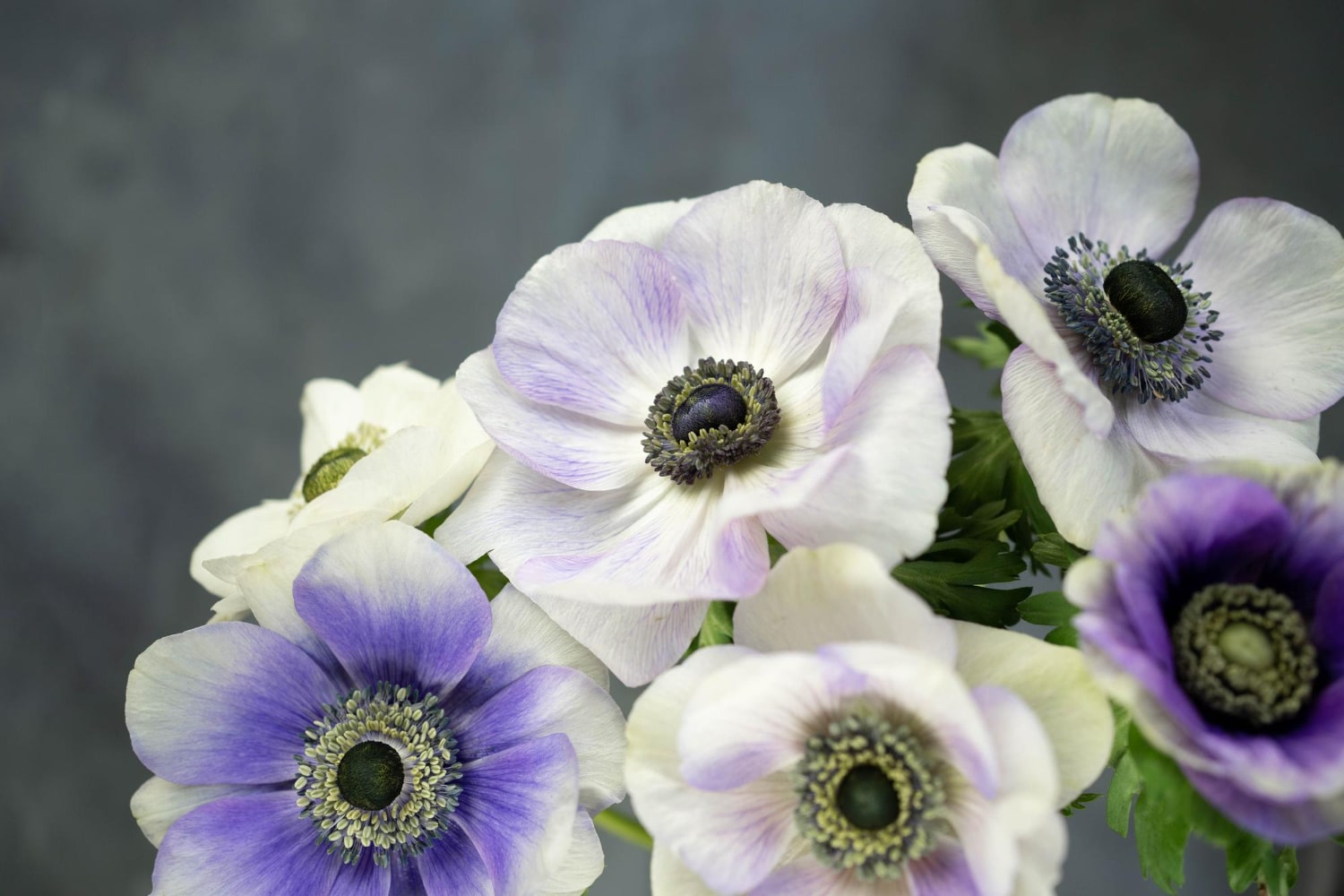Anemones, often called windflowers, are among the most delicate and graceful spring blooms. Their petals tremble with the slightest breeze, which is why they are sometimes referred to as the children of the wind. In many cultures, these flowers symbolize fragility, love, hope, and renewal. For centuries, they have inspired poets, painters, and gardeners with their simple yet refined beauty. Here are some fascinating and educational facts about anemone flowers that reveal their unique nature and charm.
- The name “anemone” comes from the Greek word meaning “wind.” The ancient Greeks believed that these flowers opened with the breath of the wind. Because of this, anemones are often called windflowers or children of the wind.
- Anemones belong to the buttercup family (Ranunculaceae) and include over 150 species. They grow naturally across the world — from Europe and Asia to North America. In the wild, anemones can be found in forests, meadows, mountains, and even steppes.
- Anemone flowers are known for their incredible variety of colors. Their petals can be white, pink, red, blue, purple, or yellow. Some varieties feature two-tone or blended shades, making them popular choices for decorative gardens.
- An interesting feature of anemones is that they open only during the day and close at night or before rain. This natural mechanism protects their delicate pollen and petals from moisture and damage. For this reason, anemones are often considered symbols of change and tenderness.
- In ancient Rome, anemones were thought to protect against evil spirits and illness. During the Middle Ages, people wore dried anemone petals as amulets believed to bring health and good fortune.
- According to Greek mythology, anemones originated from the tears of the goddess Aphrodite as she mourned the death of her beloved Adonis. Since then, they have been associated with love, grief, and eternal remembrance.
- In Japanese culture, anemones represent sincerity and purity of emotion. They are given as a gesture of peace and harmony. In European tradition, however, they often symbolize nostalgia and fleeting memories.
- Anemones are divided into spring and autumn varieties. Spring species, such as the wood anemone and the yellow anemone, bloom soon after the snow melts. Autumn types, like the Japanese anemone, flower until the first frost, adding color to late-season gardens.
- The structure of the anemone flower is unique. Its petals are actually modified sepals, which makes them more resistant to wind and rain. This feature helps anemones remain fresh longer than many other spring flowers.
- Anemones reproduce either by tubers or rhizomes, depending on the species. Tuberous varieties require a period of dormancy during winter and are typically planted in spring, while rhizomatous ones can grow in the same spot for many years.
- These flowers prefer cool climates and partial shade. They do not tolerate extreme heat or drought, thriving best under trees or near shrubs where the soil stays moderately moist.
- In floristry, anemones hold a special place. They are frequently used in wedding bouquets and festive arrangements. They pair beautifully with roses, tulips, and ranunculus, adding softness and elegance to floral designs.
- The colors of anemones carry deep symbolic meaning. White represents purity and innocence, red signifies love and passion, and blue stands for loyalty and calmness. Because of this, anemones are often chosen as meaningful and emotional gifts.
- In ancient times, anemones were used in folk medicine. Infusions made from the plant were believed to relieve headaches and fever. However, modern medicine warns that anemones contain toxic substances and should not be used without caution.
- Anemones are highly valued in gardening due to their ease of cultivation. They spread quickly, forming colorful carpets of blossoms that bring life and freshness to spring gardens.
- These flowers are also a favorite subject for artists and photographers. Their harmonious shapes, vivid hues, and delicate forms make them ideal for still-life paintings and botanical illustrations.
- The famous French painter Claude Monet had a particular fondness for anemones. He often depicted them in his works, capturing the play of light and shadow on their petals to express the transient beauty of nature.
- Modern breeders have developed dozens of ornamental anemone varieties differing in height, color, and blooming season. Some of them are adapted for indoor or greenhouse cultivation.
- In nature, anemones play an important ecological role. They attract bees, bumblebees, and butterflies that help pollinate other plants, contributing to biodiversity and ecosystem balance.
- Despite their fragile appearance, anemones are surprisingly resilient. They can survive mild frosts and bloom again each spring. For this reason, they are considered symbols of rebirth, hope, and the enduring strength of life.
Anemone flowers are a perfect embodiment of nature’s harmony between fragility and endurance. They decorate gardens, inspire art, and carry profound symbolism of renewal and beauty. These interesting facts show that anemones are not just beautiful flowers but timeless symbols of nature’s gentle yet powerful spirit.





